Figure shows the elipticla path of a planet about the sun. The two shaded parts have equal area. If t1andt2 be the tim taken by the planet to go from a to b and from c to d respectivelySolution in Tamil
t1<t2
t1=t2
t1>t2
insufficient information to deduce the relation between t1andt2 
The correct Answer is:B
Step by step video & image solution for Figure shows the elipticla path of a planet about the sun. The two shaded parts have equal area. If t_1 and t_2 be the tim taken by the planet to go from a to b and from c to d respectively by Physics experts to help you in doubts & scoring excellent marks in Class 11 exams.
Updated on:21/07/2023Topper's Solved these Questions
- GRAVITATIONBOOK - HC VERMACHAPTER - GRAVITATIONEXERCISE - Objective -2
6 Videos
- GRAVITATIONBOOK - HC VERMACHAPTER - GRAVITATIONEXERCISE - Exercises
39 Videos
- GRAVITATIONBOOK - HC VERMACHAPTER - GRAVITATIONEXERCISE - Question for short Answers
19 Videos
- FRICTIONBOOK - HC VERMACHAPTER - FRICTIONEXERCISE - Exercises
31 Videos
- HEAT AND TEMPERATUREBOOK - HC VERMACHAPTER - HEAT AND TEMPERATUREEXERCISE - Exercise
34 Videos
Similar Questions
The gravitational potential at a point due to a point mass is V=
View SolutionTwo spherical balls of mass 10 hg are placed 10 cm apart. Find gravitational force of attraction between them
View SolutionCan two particles be in equilibrium under the action of their mutual gravitational force? Can three particle be? Can one of the three particles be?
View SolutionA body slipping on a rough horizontal plane moves wioth a deceleationof 4.0ms. What is cofficient of kineic friction between the block and the plane?
View SolutionThe steam point and the ice point of a mercury thermometer are marked as 80∘C and 20∘C. What will be the temperature in centigrade mercury scale when this thermometer reads 32∘C?
View SolutionFigure shows the motion of a planet around the Sun S in an elliptical orbit with the Sun at the focus. The shaded areas A and B are also shown in the figure which can be assumed to be equal. If t1 and t2 represent the time taken for the planet to move from a to b and c to d, respectively then
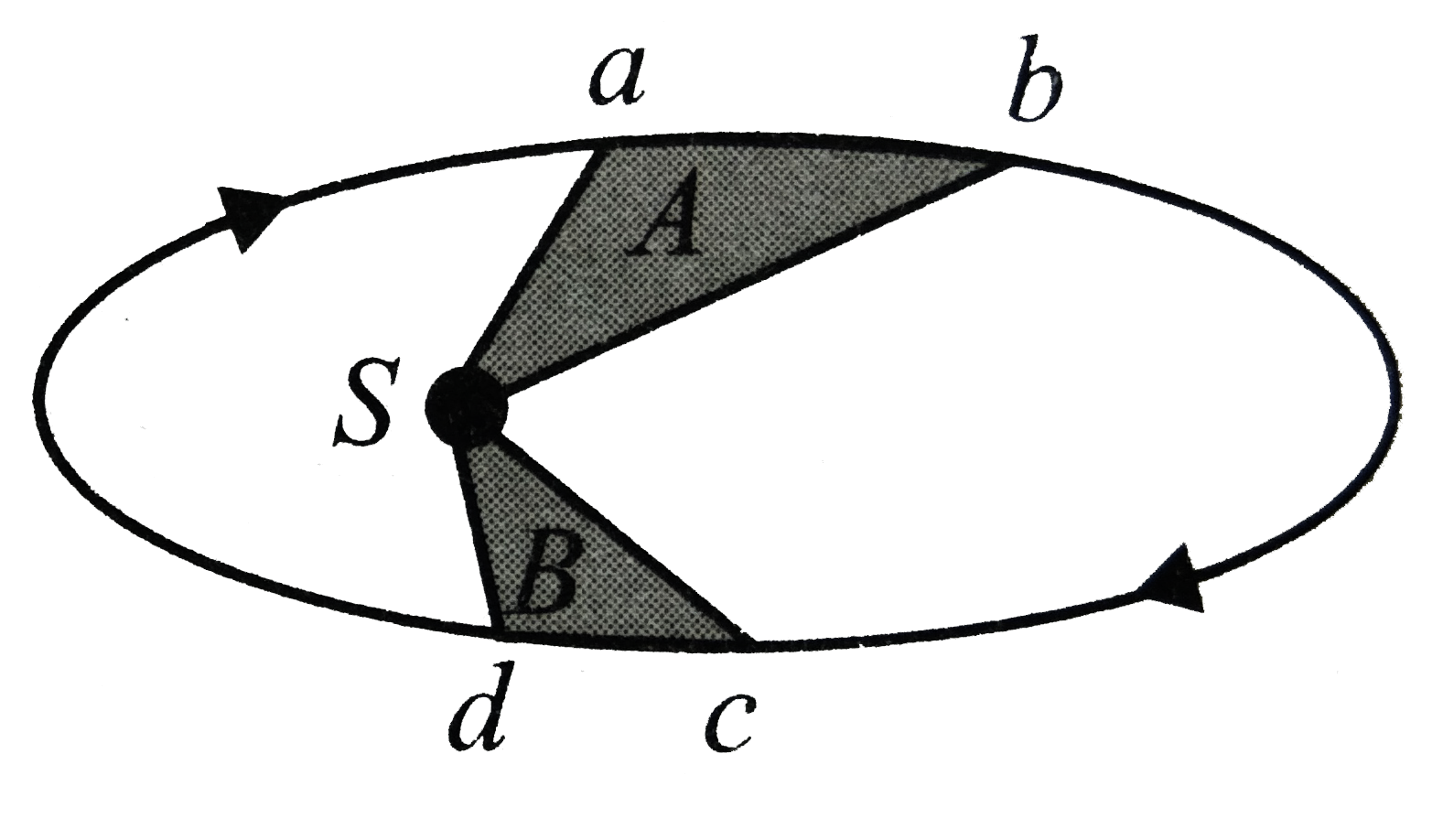
View SolutionThe motion of a planet around sun in an elliptical orbit is shown in the following figure. Sun is situated at one focus. The shaded areas are equal. If the planet takes time t_1 and l_2 in moving from A to B and from C to D respectively, then
View SolutionThe figure shows the elliptical orbit of a planet about the sun S. An ellipse is the curve obtained when a cone is cut by an inclined plane. It has two focal points. The sum of the distances to the two focal points from every point on the curve is constant. F1 and F2 are the two focal points of the ellipse . The shaded area CF1D is twice the shaded area AF1B.t1 is the time taken by the planet to move from C to D and t2 is the time to move from A to B
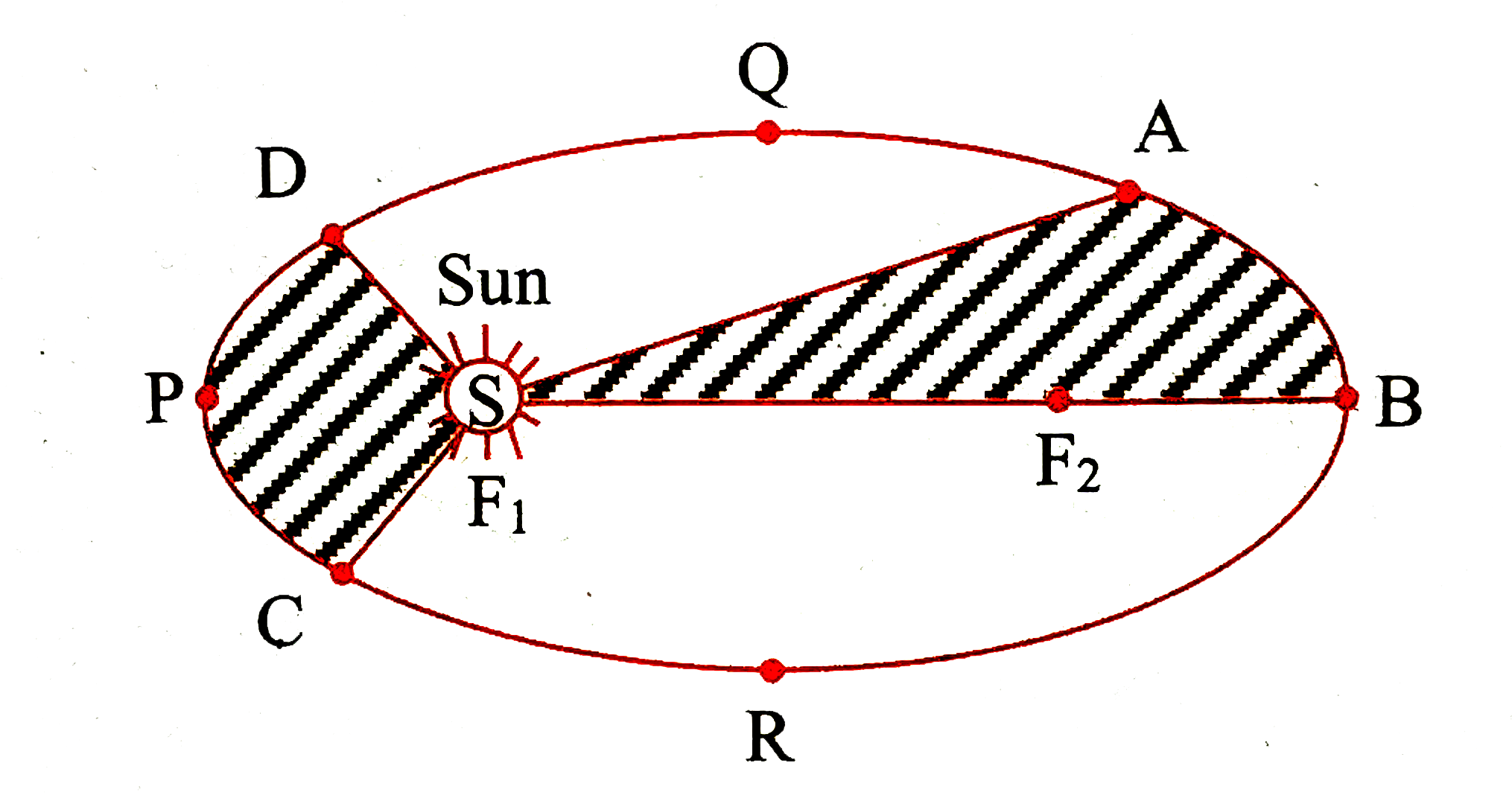
State the law regarding the time period of revolution of a planet .
View SolutionThe given figure shows the elliptical orbit of a planet m about the sun S. If t1 is the time taken by the planet of move from C to D and t2 is the time taken by the planet to move from A to B, then the relation between t1andt2 is [Given, area SCD = 2 (area SAB)]
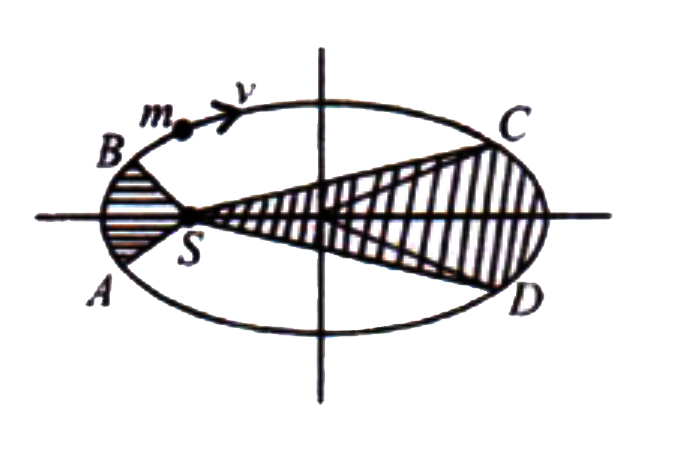
View Solutionसंलग्न चित्र सूर्य का चक्कर लगाते एक ग्रह का है । दीर्घवृत्तीय मार्ग के फोकस पर सूर्य है । यदि रेखांकित भाग का क्षेत्रफल समान हो तथा ग्रह द्वारा a से b तक एवं c से d तक जाने में लिए गये समय t1 व t2 हों तो -
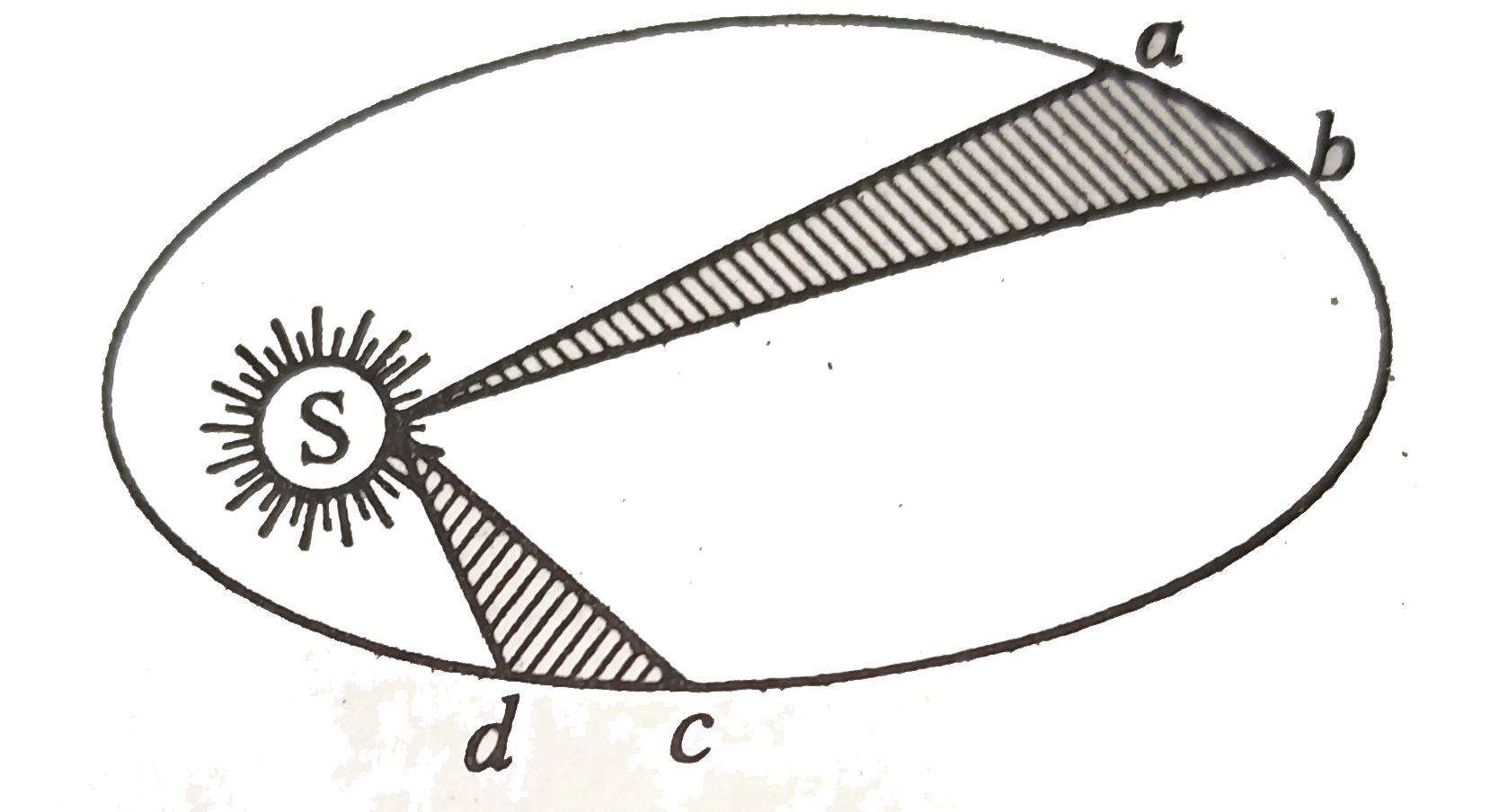
View SolutionThe figure shows elliptical orbit of a planet m about the sun S. The shaded area of SCD is twice the shaded area SAB. If t_1 is the time for the planet to move from D to C and t_2 , is time to move from A to B, what is the relation between t_1" and "t_2 ?
View SolutionTwo planets are at distance R1andR2 from the Sun. Their periods are T1andT2 then (T1T2)2 is equal to
View SolutionThe figure shows elliptical orbit of a planet 'M' about the Sun 'S', the shaded area SCD is twice the shaded area SAB. If t_(1) is the time for the planet to move from C and D and t_(2) is the time to move from A to B then.
View SolutionThe figure shows elliptical orbit of a planet m about the sun S. The shaded area SCD is twice the shaded are SAB. If t1 is the time for the planet to move from C to D and t2 is the time to move from A to B then ......

View SolutionAs shwon in figure , a planet revolves round the sun in Elliptical orbit the sun at the focus. The shaded area can be assumed to be equal. If t1 and t2 represent the time taken for the planet to move from A to B and C to D respectively, then
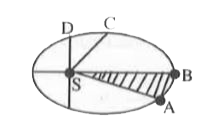
View SolutionFigure shows elliptical path abcd of planet around the sun S such that the area of triangles csa is 14 the area of the ellipse . (See figure) With db as the semimajor axis, and ca as the semiminor axi. If t1 is the time taken for planet to go over path abc and t2 for path taken over cda then :
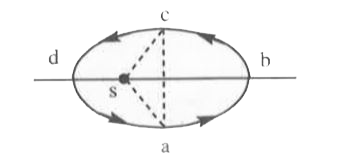
View Solution
